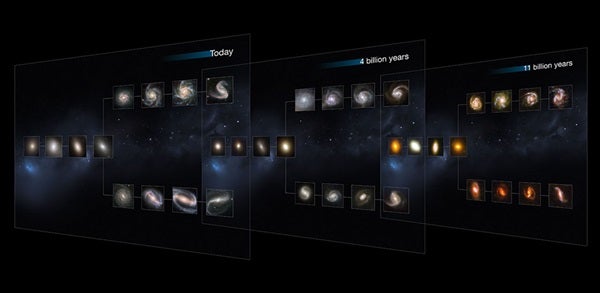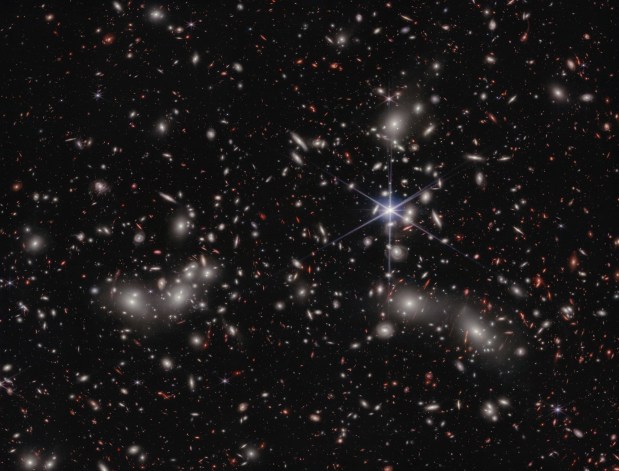The Hubble Sequence classifies galaxies according to their morphology and star-forming activity, organizing them into a cosmic zoo of spiral, elliptical, and irregular shapes with whirling arms, fuzzy halos, and bright central bulges. Two main types of galaxies are identified in this sequence: elliptical and spiral, with a third type, lenticular, settling somewhere between the two.
This accurately describes what we see in the region of space around us, but how does galaxy morphology change as we look further back in time to when the universe was very young?
“This is a key question: When and over what timescale did the Hubble Sequence form?” asked BoMee Lee of the University of Massachusetts. “To do this, you need to peer at distant galaxies and compare them to their closer relatives to see if they, too, can be described in the same way.”
The astronomers used Hubble to look 11 billion years back in time to when the universe was young, exploring the anatomy of distant galaxies.
While it was known that the Hubble Sequence holds true as far back as around 8 billion years ago, these new observations push a further 2.5 billion years back in cosmic time, covering a huge 80 percent of the past history of the universe. Previous studies had also reached into this epoch of the cosmos to study lower-mass galaxies, but none had also conclusively looked at large mature galaxies like the Milky Way. The new CANDELS observations confirm that all galaxies this far back — big and small alike — fit into the different classifications of the sequence.
“This is the only comprehensive study to date of the visual appearance of the large, massive galaxies that existed so far back in time,” said Arjen van der Wel of the Max Planck Institute for Astronomy in Heidelberg, Germany. “The galaxies look remarkably mature, which is not predicted by galaxy formation models to be the case that early on in the history of the universe.”
The galaxies at these earlier times appear to be split between blue star-forming galaxies with a complex structure — including disks, bulges, and messy clumps — and massive red galaxies that are no longer forming stars, as seen in the nearby universe.
Galaxies as massive as the Milky Way or more are rather rare in the young universe. This scarcity has prevented previous studies from being able to gather a large enough sample of mature galaxies to properly describe their characteristics.
What was needed was a systematic set of observations such as those from Hubble’s CANDELS survey, which was large enough to allow the astronomers to analyze a larger number of these galaxies consistently and in detail. With Hubble’s Wide Field Camera 3 (WFC3), the astronomers were able to observe in the infrared part of the spectrum to see how the galaxies appeared in their visible rest frame, which is easier to compare with galaxies in our neighborhood.
“The huge CANDELS data set was a great resource for us to use in order to consistently study ancient galaxies in the early universe,” said Lee. “And the resolution and sensitivity of Hubble’s WFC3 is second to none in the infrared wavelengths needed to carry out this study. The Hubble Sequence underpins a lot of what we know about how galaxies form and evolve, finding it to be in place this far back is a significant discovery.”










